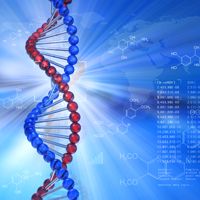Researchers Identify Rules That Govern Immune Response
Researchers have identified a set of rules that determine which molecules can trigger immune system vulnerability to common autoimmune disorders like lupus and psoriasis.

Researchers have identified a set of rules that determine which molecules can trigger immune system vulnerability to common autoimmune disorders like lupus and psoriasis.
The research, led by Gerard C. L. Wong, professor of bioengineering and chemistry, UCLA, UCLA’s Henry Samueli School of Engineering and Applied Science, and California NanoSystems Institute, was published in the journal Nature Materials.
Using synchrotron X-ray scattering and other methods, the researchers “determined that a broad range of molecules, both organic and inorganic, can organize self-DNA into a liquid crystalline structure that binds strongly” to TLR9 receptors, which induce the interferon response.
This crystalline structure protects the DNA, thus strengthening the immune response.
If researchers can learn more about how these molecules are organized, it could pave the way for more effective treatments for lupus, psoriasis, and other autoimmune disorders.
Wong commented, “Our research has identified a set of rules that tell us what types of molecules or materials can set off this aspect of the immune system. This new knowledge will make it easier to design new therapeutic strategies to control immune responses.”
Furthermore, Nathan Schmidt, another study author, said, “Our colleagues had established empirically that certain molecules were activating self-DNA and triggering responses in disorders such as lupus and psoriasis. We were able to elucidate something that was poorly understood — a key to triggering the immune response is that the molecules must arrange the DNA so that the receptors bind to them strongly.”